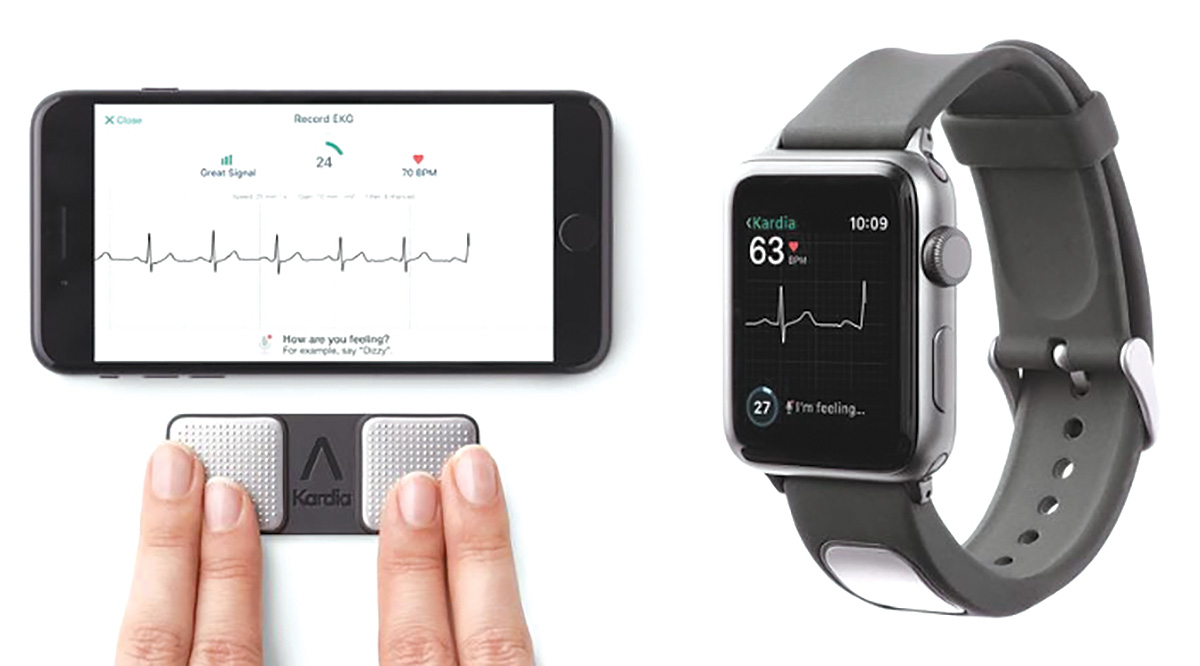Innovation at ACC | Apple Watch ECG: A Useful Tool or Just Cool?

The influential player in the arena of personal consumer devices has once again given us a new gadget. Apple Inc., (Cupertino, CA) recently advanced into the digital health care device space with the release of the new Apple Watch Series 4 that is equipped with two direct-to-consumer electrocardiogram (ECG) recording mobile apps.
The release of Series 4 marks a milestone in advancing the Apple Watch from a gadget to a potentially clinically useful monitoring device. The Series 3 Watch offered an ECG recording application via the Kardia device from AliveCor (Mountain View, CA), a free-standing, portable one-electrode ECG that generates a rhythm strip from a 2"x 1" flat recorder held between the thumb and the index fingers of each hand.
Users can attach the device to their phone case, carry it in a pocket, and use it for themselves or anyone else. Users then can send the recording to a technician or their physician for review. The professional version (Kardia Pro) allows cardiologists to use the device to monitor patient's rhythms, acquired either at prespecified time points or at any time, including when symptoms are experienced.
In the Apple Watch Series 4, the same principle is used to record a rhythm strip, now using Apple's native mobile app. The Watch forms a recording lead between a turn-dial that rests on the user's arm and the finger of the opposite arm. In addition, the Watch is now equipped with the fall-sensing device, enabling a user to use it as personal emergency response system (PERS).
While the Kardia device has shown promise in the detection of atrial fibrillation (AFib) in asymptomatic individuals in the community setting, none of the currently available rhythm recorders are recognized as a medical device. The U.S. Food and Drug Administration approval is specific to the ECG mobile applications used on the Apple Watch or the Kardia mobile app. Clinicians and the company are careful to point out that the Apple Watch's ability to record a rhythm strip is not a substitute for the available medical devices for rhythm disturbances or physician visits.1
Given the availability of these direct-to-consumer rhythm recording devices and their relatively low price point ($99 for Kardia and $399 for Apple Watch), are these just cool or actually clinical tools that may be useful?
We can identify several patient groups for which these rhythm-recording devices may be a useful adjunct in their care and management:
- Patients with unexplained palpitations, syncope or near-syncope where the previous testing was unrevealing. While these patients may benefit from an implantable loop recorder, many such patients are seeking a less invasive monitoring option.
- Patients with known rhythm disturbances, such as AFib, where ongoing recording and transmission is helpful in medication adjustment and symptom monitoring.
- Patients or consumers seeking health optimization and fitness tracking.
- Patients or consumers 65 and older using the devices for PERS applications.
While it may be possible in time for the rhythm-recording devices to provide additional information for ischemia detection by analyzing ST segment patterns, currently none are approved for this indication.
However, the possibilities are intriguing, and in addition to ischemia detection may include heart rate variability, sleep apnea testing and even exercise training routines that are physician monitored. These may be useful for patients with heart failure or chronic obstructive pulmonary disease.
The PERS function is particularly novel not just for assistance to older patients sustaining a fall, but also as a possible surveillance method in a sudden cardiac arrest scenario, leading to deployment of rapid bystander CPR and ambulance activation.
Of course, as is always the case with direct-to-consumer devices that aim to generate health-related data, implementation raises a number of important issues. If the Apple Watch is used in the clinical setting, how does a user transmit the data? What changes and role adjustments are needed within the medical team workflow to accommodate such use? What about data governance and privacy issues? How would such information be used in clinical decision-making?
Finally, access is relevant. The Apple Watch is suited for ongoing personal use, while the Kardia recorder can be used for point-of-care multiple patient screening. Some insurance carriers have begun to provide the Apple Watch to subscribers for fitness tracking.2 The Apple Watch still needs to be paired with an iPhone thus increasing the cost to a user.
For full disclosure, we should point out that one author (Druz) is an active Kardia user (both personal and Pro versions) while another author (Freeman) owns the Apple Watch Series 4 and tested the native ECG app. Another author (Harzand) does not use either app. As with all new technology, we believe that time and ongoing use will likely define the appropriate clinical fit for the direct-to-consumer rhythm and emergency monitoring products.
This article was authored by Andrew M. Freeman, MD, FACC; Arash Harzand, MD, FACC; and Regina S. Druz, MD, FACC.
References
- Fox M. The new Apple Watch has a heart monitor and the FDA approves. Available here. Accessed Jan 4, 2019.
- Link T. Health insurance companies offering Apple Watches to customers for fitness tracking program. Available here. Accessed Jan 4, 2019.
Keywords: ACC Publications, Cardiology Magazine, Pulse Wave Analysis, Radiotherapy, Adjuvant, Delivery of Health Care, Tetrazoles, Biphenyl Compounds, Power, Psychological, Benzimidazoles, Attitude, Artificial Intelligence, Ecosystem, Telemedicine, Biomarkers, Pharmacological, Biotechnology
< Back to Listings

